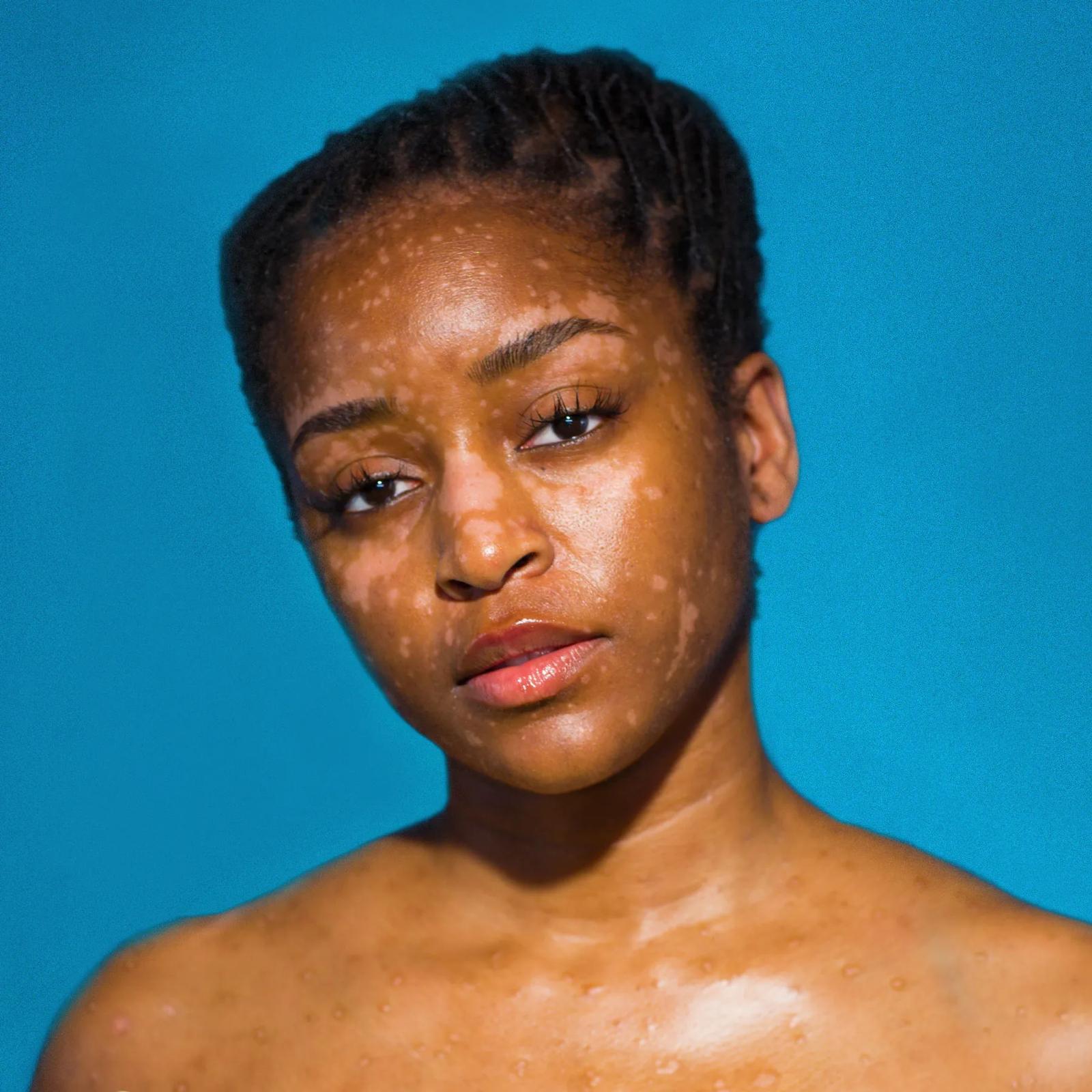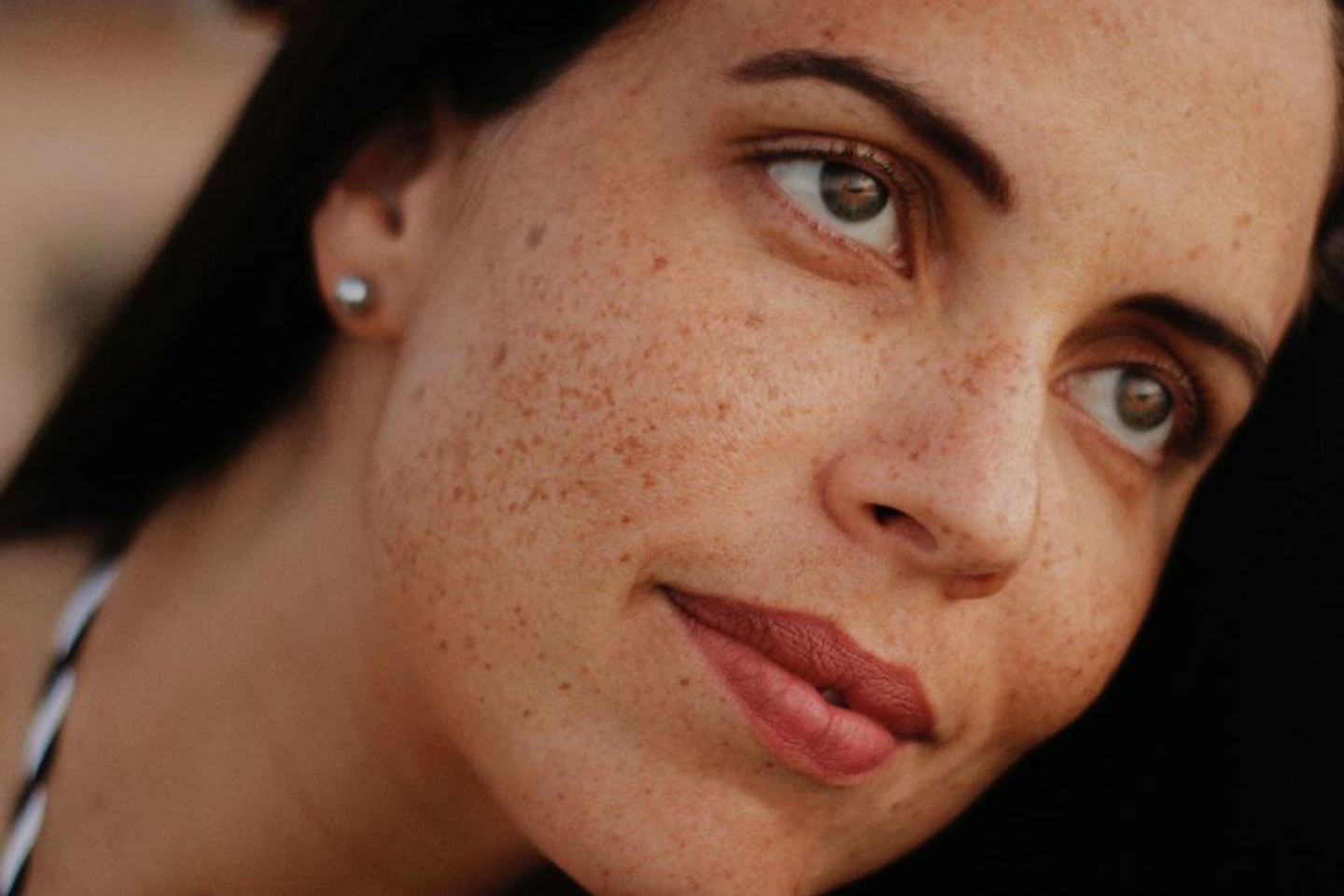
Rosacea In Dark Skin: Busting The Myths
Rosacea is an inflammatory skin condition. Darker skin tones are often misdiagnosed and therefore don’t get the treatment they need. Read on as we bust the myths behind rosacea in dark skin.
By SunsolveMD Team | 8 Min. Read
January 5, 2023Rosacea is a chronic, inflammatory skin condition that can be visually observed on the face and neck as redness or blushing of the cheeks, tiny spider blood vessels, thickened skin with enlarged pores or nodules, and small pustules. There is even a form of rosacea in the eyes that can leave eyes looking red, swollen, dry, or crusty. These symptoms have created four classifications of rosacea, respectively called erythematotelangiectatic rosacea, phymatous rosacea, papulopustular rosacea, and ocular rosacea. While there is no immediate health danger for patients with rosacea, it can lead to low self-esteem and impact lives, both personally and professionally. Because rosacea is diagnosed by visual cues in the skin, it is frequently misdiagnosed in darker skin types.
What causes rosacea?
The exact cause of rosacea is unknown and complex, but many theories have evolved over the years. One theory is that the body’s immune, nervous or circulatory systems have developed defects, causing the characteristic red, flushing skin and visible blood vessels. In recent decades, researchers have proposed that the presence of microbes like Helicobacter pylori in the intestinal tract or Demodex mites living on skin may play a role. There is also some evidence to suggest rosacea may also be inherited and individuals can be genetically predisposed to developing it, but there is some debate over the validity of this thought. It remains unclear if related individuals have rosacea because of shared DNA or environmental factors that are shared due to living in close proximity.
What are common triggers of rosacea?
For individuals diagnosed with rosacea, its symptoms aren’t necessarily present in skin at all times. In fact, symptoms may subside for a period of time before flaring up again. Because there are different types of rosacea with varying causes and symptoms, not everyone has the same triggers, and what may cause a flare up in one individual may not impact another individual at all. However, there are common triggers that people do share.
The National Rosacea Society conducted a survey of 1,066 patients suffering from rosacea nd found the most common self-reported triggers were:
- Sun Exposure (UV)
- Emotional Stress
- Hot Weather
- Wind
- Heavy Exercise
Other triggers include drinking alcohol or hot beverages, smoking, eating spicy foods, taking certain medications or using cosmetic products. Hot weather, exercise and alcohol are thought to dilate surface blood vessels in skin, promoting redness and flushing of skin.
What does rosacea look like in skin of color?

In lighter skin phototypes I-III, such as Caucasians and people of Northern European descent, skin suffering from rosacea may obviously present itself to some varying degree with skin that is red, poorly textured, veiny, or with pustules. In melanin-rich skin phototypes IV-VI, which includes people of African, African-American, Asian, or Hispanic descent, the signs of rosacea is less obvious.
Darker skin may feel flushed with dry patches or appear thickened on the nose, cheeks or forehead. Small, acne-like bumps may appear that don’t resolve with traditional acne treatments. Skin may also become discolored in dusky, brown patches.
Why is rosacea misdiagnosed in darker skin?
Symptoms of rosacea typically start between the ages of 30-50, and is predominantly diagnosed in lighter-skinned women, although there is no confirmed, established link to gender. Rosacea can occur in all skin types, yet rosacea is underdiagnosed in darker skin populations, so the true incidence of rosacea across skin tones is not fully understood. What is responsible for misdiagnosis in darker skin?
Rosacea is diagnosed using symptoms as visual clues, which are more difficult to see in darker skin phototypes. Any redness in darker skin may be masked by post-inflammatory hyperpigmentation. It is also thought that darker skin may exhibit less signs of classical flushing because flushing is often induced by ultraviolet light exposure from the sun. Since darker skin is more protected from the sun due to its melanin-rich content, the skin may not flush as easily.
Additionally, the dusky brown hyperpigmentation and skin-colored bumps on darker skin can be mistaken for other skin disorders, such as melasma or acne. If the clinician is inexperienced in diagnosing skin of color with rosacea, it can lead to a misdiagnosis and ineffective treatment recommendations.
More and more research is being done on understanding how rosacea impacts darker skin tones, and how to treat it. While there is no cure, the more research that is conducted will lead to more clinical awareness with doctors. This will allow them to make more accurate diagnoses and recommend appropriate therapies to manage the symptoms of rosacea in melanin-rich skin.
What should you do if you think you have rosacea?
Receiving the correct diagnosis and treatment recommendations are extremely important to combat the signs and symptoms of rosacea. Speak to your primary care physician or board-certified dermatologist about your symptoms and how you would like your skin to improve. They will conduct a careful examination of your skin, but most importantly, they will interview you to understand what is occurring.
Because rosacea is harder to see in darker skin tones, your doctor may not be able to see the physical signs. Therefore, they will need to rely heavily on your experiences. Arrive to your appointment prepared so you can provide your doctor context about the triggers and symptoms you are experiencing. It may be helpful to keep a journal beforehand, taking careful notes. There are a few things you may want to recall.
- When did the symptoms start?
- If your skin feels flushed, when does it feel that way?
- Do you notice that every time you eat a certain food or use a certain skincare product, you develop bumps on your skin?
- Does your skin burn, tingle or feel flushed every time you use skincare products?
- Does your skin change with seasons?
- Who else you in your family has these issues?
Being armed with this information will help your doctor understand more about what is occurring behind the scenes if few clinical manifestations are present. Even more importantly, maintaining a rosacea journal will also help you understand what activities exacerbate your symptoms so you can avoid them in the future.
What are treatment options for darker skin with rosacea?
The good news is that rosacea treatments are used across all skin colors, so there are many treatment options available. Once you have a diagnosis, you can discuss the best path forward with your doctor, whether it be a prescription topical therapy (such as a steroid or 15% azelaic acid gel), or a systemic oral therapy (like an an antibiotic).

Laser and light therapies can often be used successfully to treat symptoms, but darker-skinned patients should use caution. Pulsed light therapy can lead to an increase in hyperpigmentation due to the higher melanin content in skin, which would negate any benefits of the treatment for rosacea. Darker skin may also have an increased risk of keloid and hypertrophic scar formation from using lasers. If seeking laser or light therapy as an option, solicit clinicians highly trained in working with therapeutic devices on darker skin types.
An unsuspecting culprit that may be aggravating symptoms are medications and vitamins. Some vasodilators or topical steroids may trigger a flare up. Additionally, studies have shown that some rosacea suffers experience worsening symptoms when supplementing their diets with vitamins B6 and B12.7 Your doctor will be able to help you determine if there are any side effects contributing to your rosacea symptoms.
Finally, the most important thing darker skin types can do to treat rosacea is practice proactive care. Avoid common triggers in order to reduce flare ups. Since sun exposure is the most common trigger for rosacea symptoms, utmost caution must be used when going outside, no matter the time of year, rain or shine. Even on a cloudy day, ultraviolet rays can penetrate Earth’s atmosphere and reach your skin. When that happens, the ultraviolet light creates a series of complex, pro-inflammatory reactions within skin. The UV light causes an imbalance of antioxidant in the skin’s cells, generating reactive oxygen species. These reactive oxygen species in turn cause an inflammatory response in skin, aggravating the symptoms of rosacea. Additionally, studies have demonstrated that UV light from the sun can cause permanently dilated blood vessels in patients with rosacea.
The best way to protect dark skin against UV light is to wear a daily sunscreen that’s specifically designed for rosacea-prone skin, like SunsolveMD Anti Rosacea Mineral SPF50. This broad-spectrum SPF contains broad spectrum zinc oxide that not only blocks UV rays from the sun, but is formulated with an anti-redness complex that visible helps to correct the look of skin redness. Don’t forget to apply any sunscreen 30 minutes before heading outdoors so it has time to form its protective layer on skin and be sure to reapply every two hours
It is important to incorporate other aspects of good skin hygiene and care, including skin cleansing and moisturizing. Since there is some thought that mites can contribute to rosacea flare ups, cleansing skin in the morning and night with a gentle, sulfate-free cleanser will remove any oil, debris and harmful microbes from skin, without leaving it feeling stripped. Following up the cleanser with a moisturizer will help keep the skin’s natural, protective barrier intact. When the skin’s protective barrier is broken, this can lead to irritation, triggering a rosacea flare up. By using products that can work on the lipid level to soothe skin (like our SPF moisturizer that contains SunsolveMD CeraPol-3 Technology™) this barrier can be restored. Avoid using harsh scrubs and exfoliating devices since they can physically aggravate the skin. Even exfoliating acids, like alpha hydroxy acids (glycolic or lactic acids, for example), can contribute to flare ups, and should be avoided.
References
Manifestations of ocular rosacea in females with dark skin types
Rosacea fulminans triggered by high-dose vitamins B6 and B12. J Eur Acad Dermatol Venereol
LEARN
You Might Also Like
Psoriasis & SPF: The Do's & Don'ts
Psoriasis is a chronic skin condition causing red, scaly, and often itchy patches. Find more about choosing the sunscreen formula that provides maximum protection and soothes the skin.
By SunsolveMD Team | 8 Min. Read
January 20, 2023More Than Just Sun Protection: 5 Skin Concerns Mineral SPF Can Help Treat
Learn how to manage 5 common skin concerns with your regular broad-spectrum SPF 50. From rosacea to melasma, through aging and wrinkles.
By Saskia Courtenay | 10 Min. Read
January 27, 2023Going to the Beach With Psoriasis: Risks and Benefits
Your scientific guide to safely treating psoriasis with natural sunlight
By Amelia Abraham | 9 Min. Read
January 3, 2023


